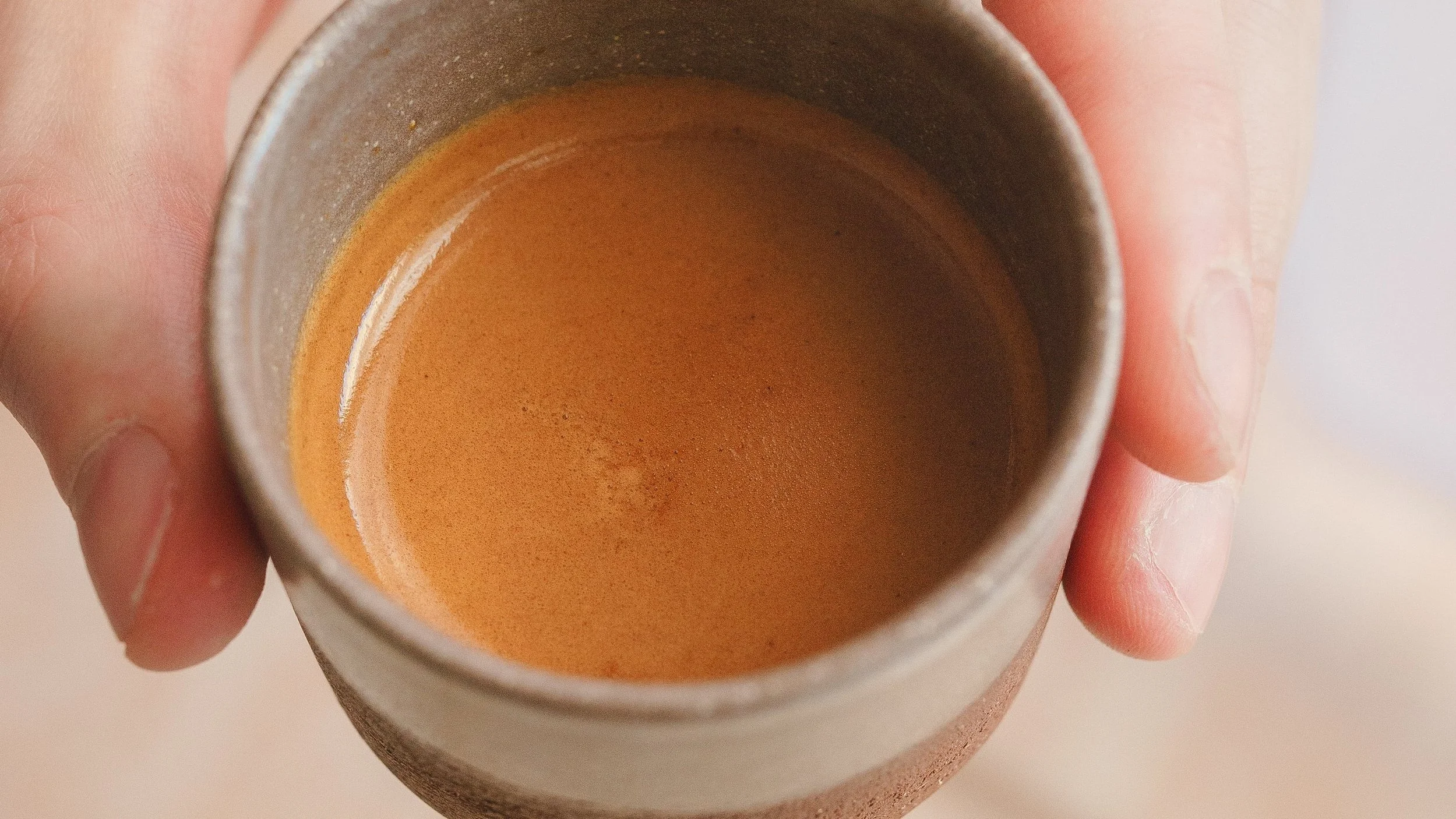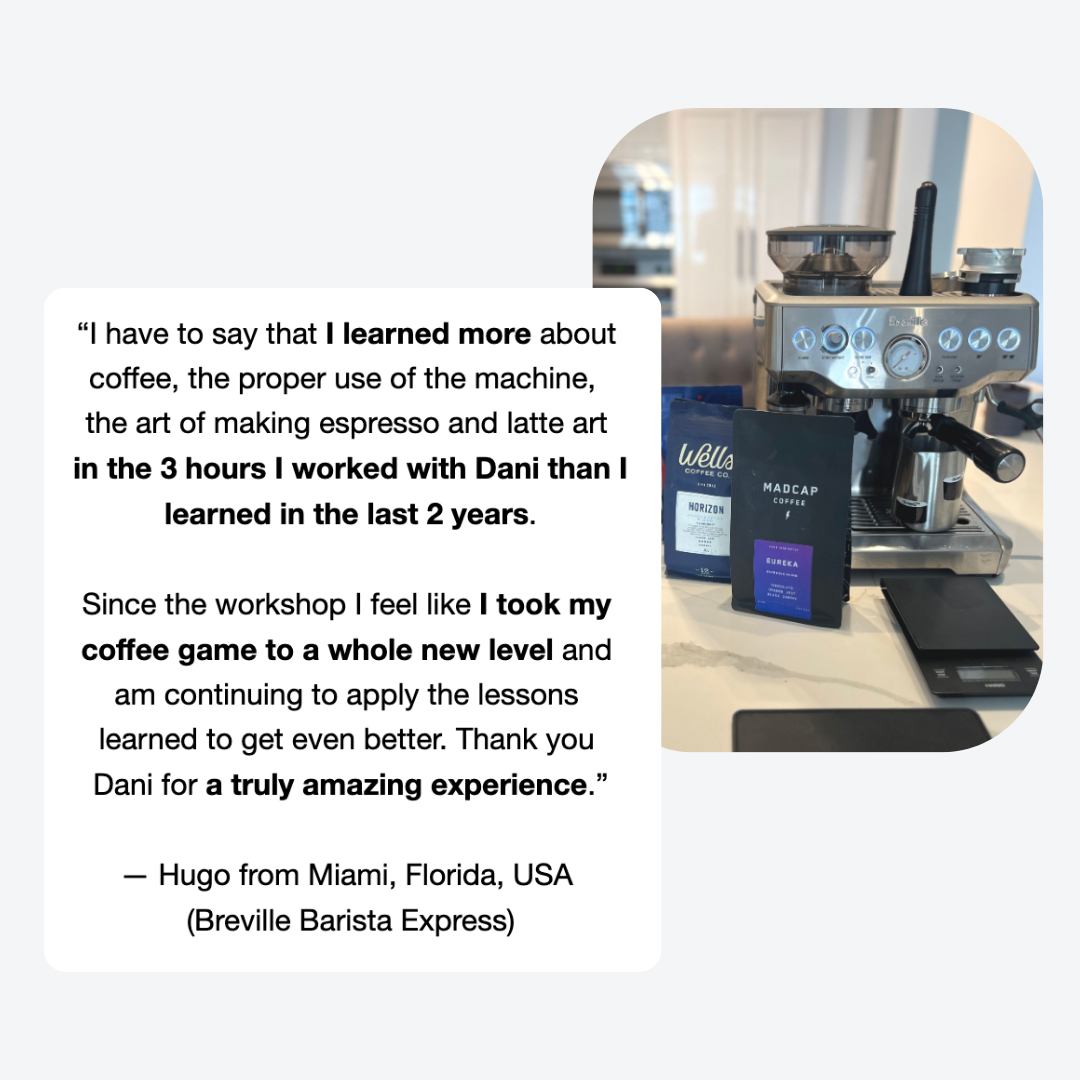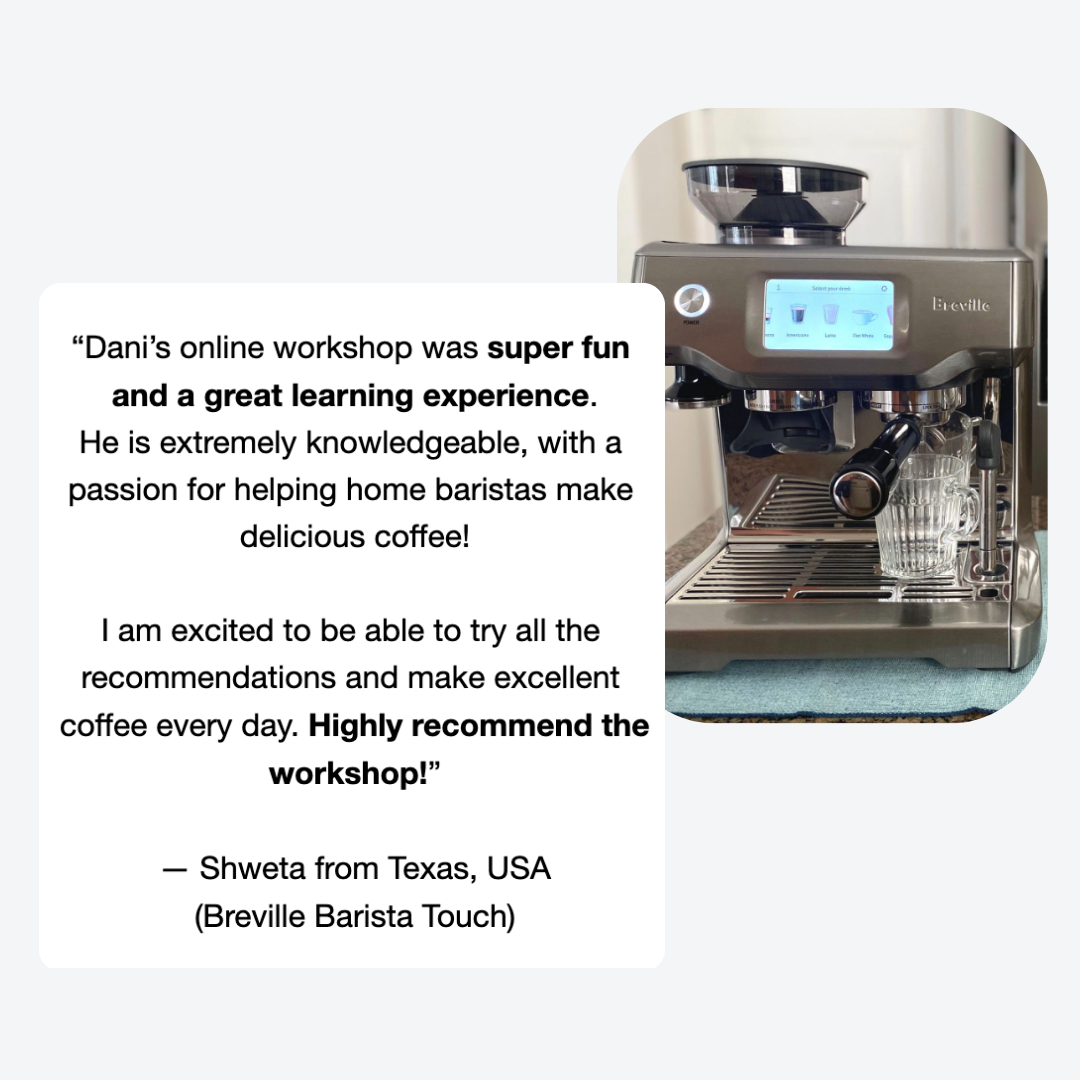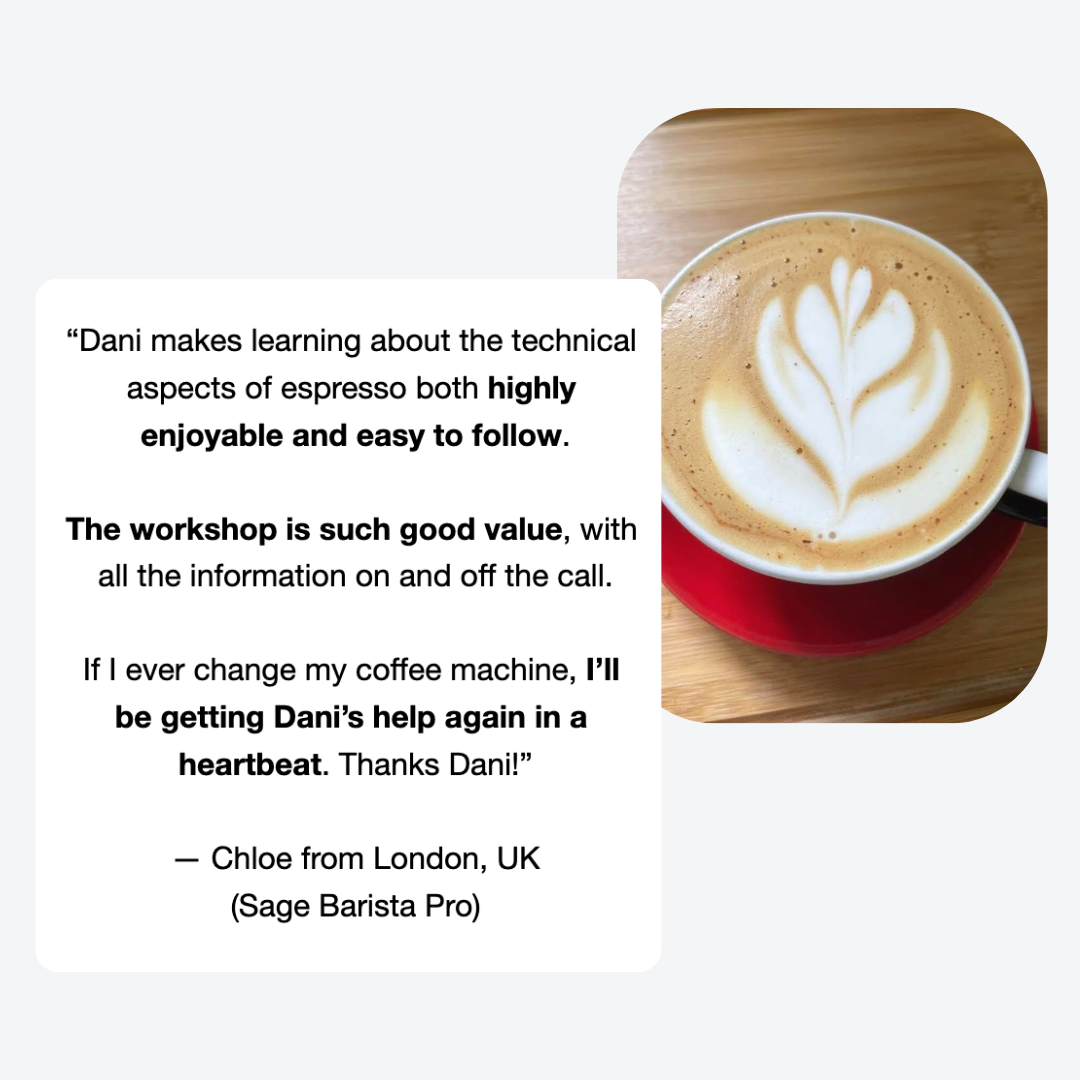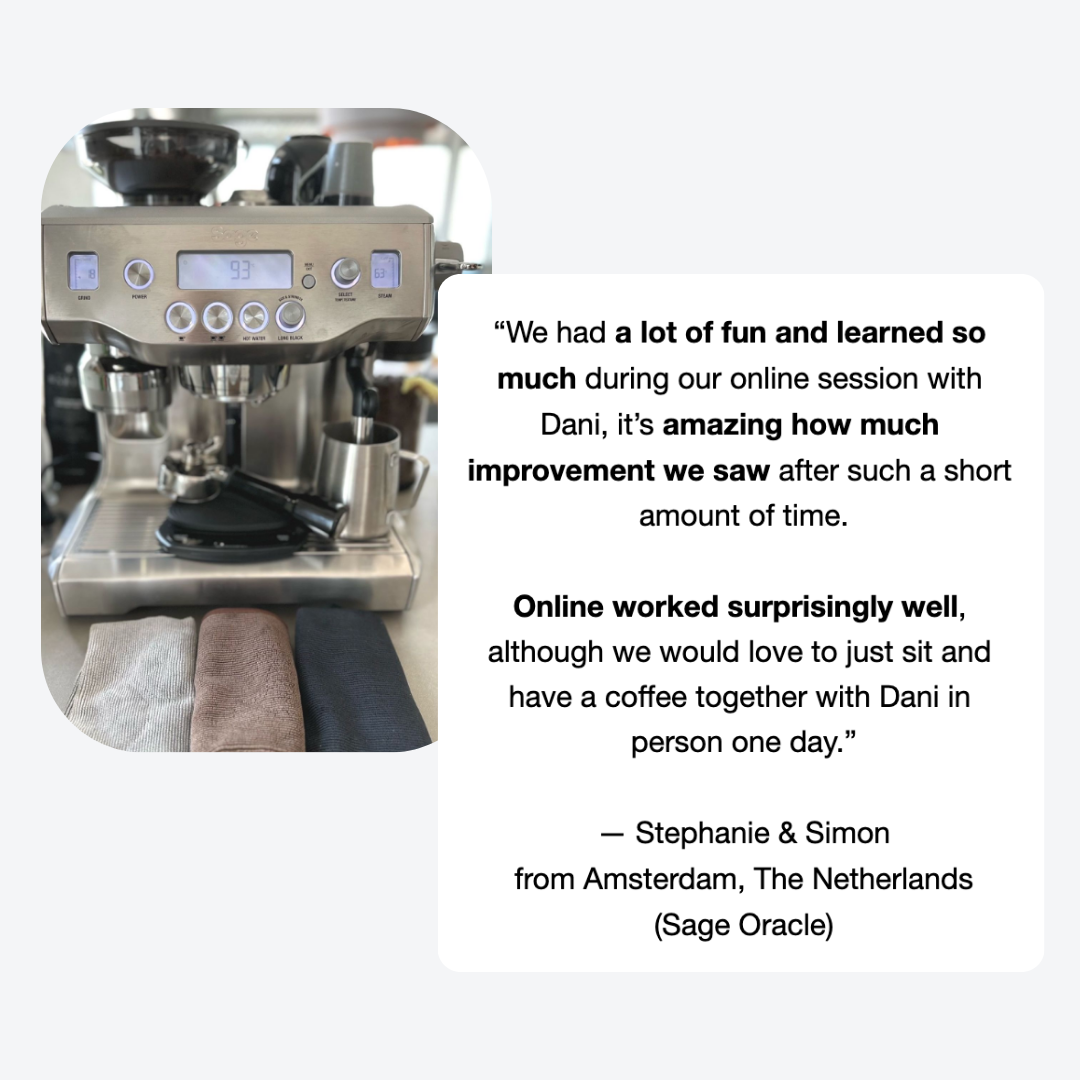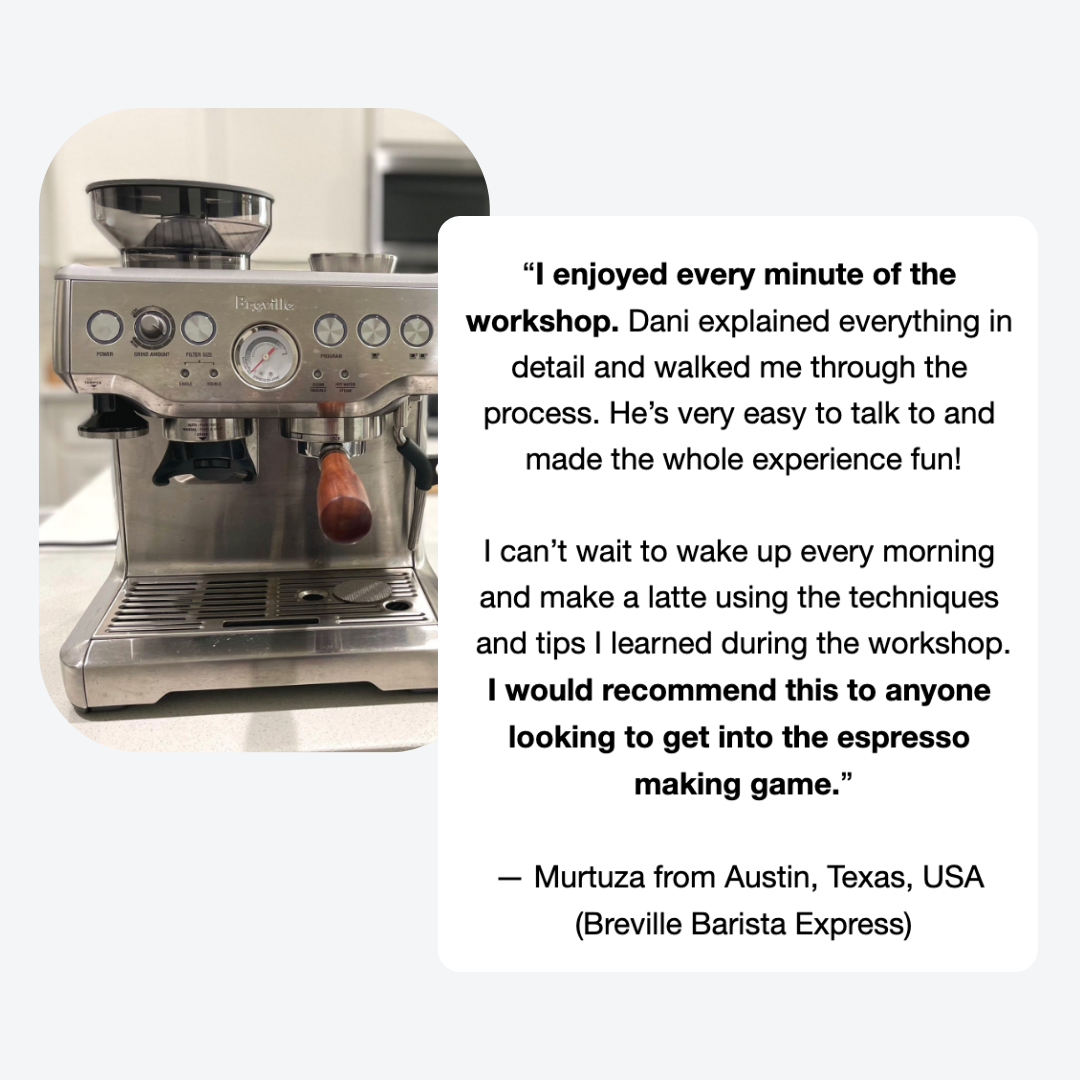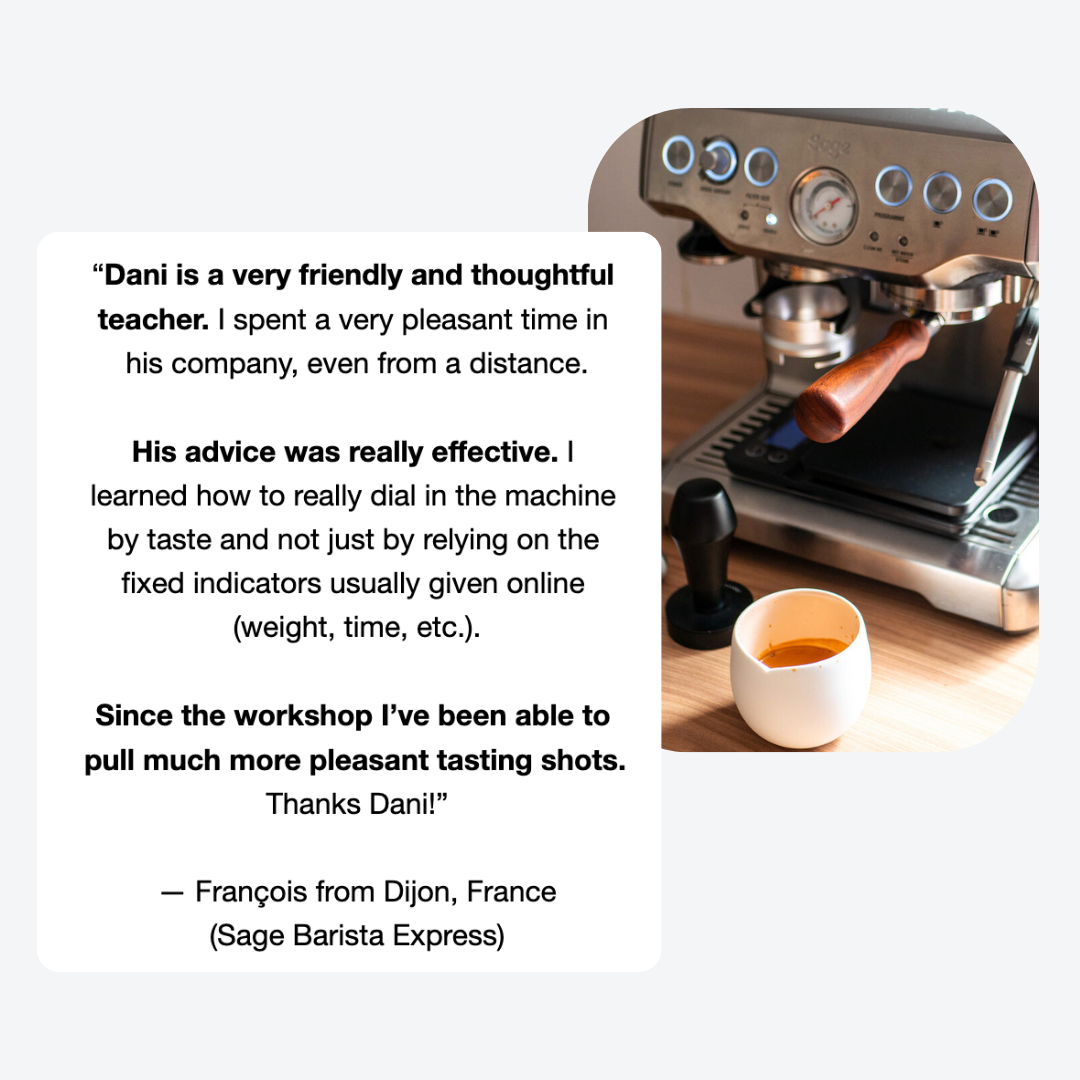Signs of an over-extracted espresso and how to fix it
3 tips for a better espresso at home
When we’re making espresso, we’re grinding freshly roasted whole coffee beans and we’re essentially pushing hot water through that bed of coffee to extract acidity, flavors, oils and aromatic compounds. Having the right level of extraction means achieving a cup of espresso that has rich flavors, with a balanced acidity and little bitterness. In contrast, over-extraction happens when the brewing process goes beyond the sweet spot and the espresso turns out bitter, dry and unpleasant.
This article is a follow up on the under-extraction article we published recently and with it we’re aiming to:
explain the difference between a good and an over-extracted espresso
understand why over-extraction happens
learn how to fix over-extraction and bring out the ideal flavors in your espresso!
How does a good espresso taste like?
A well extracted shot of espresso will be aromatic, rich in flavors and strike a pleasant balance between sweetness, crisp acidity and a low level of bitterness (to complement and round it all up).
As you may remember from one of our previous articles, during the espresso extraction water will pull out various compounds from the coffee, each contributing to the flavor of the espresso — first there’s acids and fats, followed by sugars and, right at the very end, the plant fibers (these taste dry and bitter).
What is espresso over-extraction?
Over-extraction occurs when you pull too much of the soluble flavors found in coffee. When you reach this level of extraction, you end up bringing some unfavorable flavors into your espresso, and so affect its quality in a negative way.
3 signs of an over-extracted espresso
1. Strong bitterness
When brewing espresso, there will always be some bitterness to balance out the acidity found in coffee — but, this is not the bitterness we’re referring to here.
As mentioned in the beginning, the bitter parts come out only after all the other compounds have already been extracted from the coffee. When we push the espresso extraction beyond its sweet spot, this will result in an intense, lingering bitterness that overpowers all the other sweet, fruity and floral qualities, and leaves you with an unpleasant aftertaste.
2. Dull and muted flavors
A well extracted shot of espresso is rich, smooth and full of flavor. In contrast, over-extracted espresso is hollow, lacking body and overall unexciting. You may also have noticed, compared with the crema of an ideal espresso, the crema in over-extracted espresso is often thinner.
3. Dryness (astringency)
There is a chance you may have had a coffee in the past that left you with a very strong, dry, sandpapery sensation on your tongue. I bet your first impulse was to look for a glass of water and wash it off! The sensation is similar to eating an underripe banana, drinking a black tea or a red wine full of tannins. This is called astringency and it’s not something to be desired in coffee. When you come across this sensation, you can be sure it’s a sign of over-extraction.
The 3 most frequent reasons behind espresso over-extraction and how to fix it
Before we go any further, keep in mind that the way the coffee beans have been roasted (i.e. roast profile) matters a great deal in the way flavors will be extracted. For example, the coffees of a medium - dark to dark roast will extract at a faster rate and will have more bitter compounds to begin with. That being said, when you’re using such a roast, you’ll need to adjust a few variables before making espresso, such as grind size and water temperature. In this case, you might find our article on How to dial in a dark roast espresso at home useful.
1. Using too much water
As I often mention in many of our previous articles, as well as on my Instagram, the amount of ground coffee to water used — also referred to as brew ratio — is important. For a standard medium roast, a 1:2 ratio is a good starting point i.e. 18 grams of coffee in to 36 grams of liquid espresso out.
However — and here we circle back to the topic of roast profile — some coffees that are more developed (i.e. have been roasted for longer, such as medium - dark and dark roasts) are more soluble, therefore they may present some over-extraction even at this ratio. When this happens, try brewing a smaller amount of espresso. Going for a shorter extraction will help reduce bitterness and produce a sweet, flavorful and texturised espresso.
2. Grind size is too fine
Just as the brew ratio affects espresso extraction, the grind size of the coffee plays an important role too. Using a grind size that is too fine will significantly change the flavors of your brewed espresso.
Let me paint a very simple example. Generally, you extract a double shot of espresso in around 30 seconds. Imagine pulling the same amount of espresso, but this time it will take you 40 to 50 seconds. Over-extracted espresso often flows very slowly, sometimes even dripping from the spouts of the portafilter. If the grind size is too fine, the contact time between the ground coffee and the water will be too long, and so the water will start pulling some of the less desirable flavors found in coffee, namely bitterness and astringency.
If you are observing a very long extraction and the espresso is tasting as described above e.g. bitter, muted and dry, adjusting your grinder to a coarser grind setting will help fix the problem. By grinding coarser, the larger particles of coffee will allow for a quicker flow of water through the bed of coffee and extract the right balance of flavors.
3. Water temperature is too high
For a standard medium roast, you can start at 93 degrees Celsius / 200 Fahrenheit. But, as we already mentioned, medium - dark and dark roasts are more soluble and they extract easier. This will require adjusting to a lower temperature, to avoid over-extracting and pulling unpleasant flavors and bitterness into your espresso.
It depends on the particular coffee beans you’re using, but I recommend adjusting to 2 up to 4 degrees lower, tasting your espresso and further tweaking the temperature until it works best for your preference.
Extra tip: Clean your espresso machine regularly
Ensure the espresso machine is cleaned regularly and thoroughly, and free from any residual coffee grounds or oils, which may impart unpleasant tastes to your espresso. Regular maintenance will prevent unwanted metallic, bitter or astringent flavors ending up in your espresso, oftentimes caused by dirty and neglected equipment.
I hope you find these tips helpful and, if you’d like to dive deeper, you may consider our espresso and latte art home barista workshops. Happy brewing!

